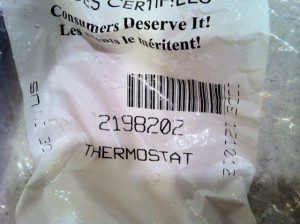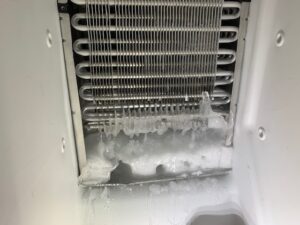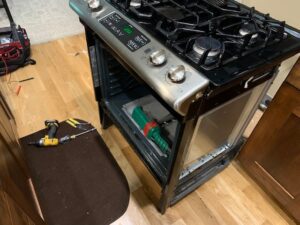Refrigeration Repair in Meridian
This picture shows a refrigerator control board that was replaced due a problem with the automatic defrost-cycle.
Frozen condensation can be described as a very thin layer of frost or ice that is evident in the Freezer. It can be seen on the shelves, on or around the icemaker, or on food. Sometimes it is also evident in the lower part fresh food shelves. Not as often though.
Frozen condensation or ice occurs because there is moisture being introduced into the freezer compartment, whether through an automatic defrost cycle or the door is left open.
When the refrigerator or freezer door is left open or the door is no sealing properly ambient air enters the freezer. Since room air contains the moisture the water will condensate on the freezer food, shelves, evaporator, or walls due to the temperature differences.
Another reason for frozen condensation is the automatic defrost cycle of the freezer or refrigerator itself. During the automatic defrost cycle the compressor turns off, the defrost heater heats the evaporator and the dripping water from the evaporator diverts into a drain tube and into a pan in the bottom of the refrigerator. Once the defrost cycle is complete the compressor turns back on, the evaporator refreezes and the evaporator fan motor turns on at the same time. The problem with this scenario is that the evaporator takes a few minutes to get to a low enough temperature to refreeze the drips or wetness that was left over by the defrost cycle. In these few minutes the evaporator fan is blowing this moisture into the refrigerator and Freezer, which eventually condensates and freezes. Sometimes this extra moisture is negligible and sometimes it becomes a problem. In many modern refrigerators designers and programmed a delay time between the compressor turning ON and the evaporator fan activation. This allows the dripping evaporator a chance to refreeze the water before blowing and circulating cold air.
A blocked defrost drain will also cause condensation.







